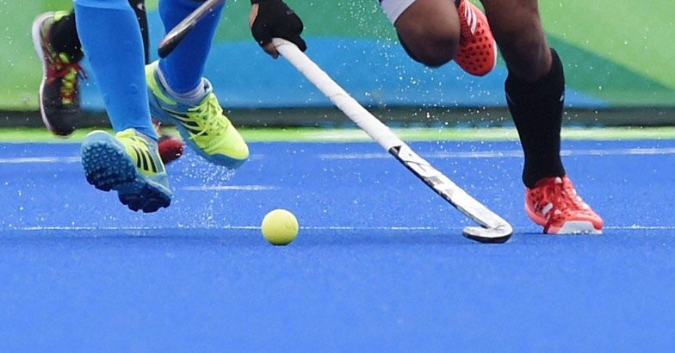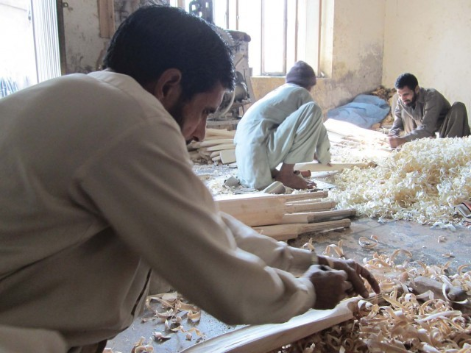Begin typing your search above and press return to search.
Featured
With duty hike on Pakistani Goods, India loses out on High-Quality Sports Equipment

The ongoing hostility between India and Pakistan after the Pulwama terrorist attack on 14th February is triggering surprising fallouts every other day. Indian sports is already paying the price for not allowing Pakistani athletes to participate in the ISSF World Cup last month. Following a censure by the International Olympic Committee (IOC) along with revoking of Olympic quotas, the world wrestling body, United World Wrestling (UWW) has sought all national federations under it to stop communication with the Wrestling Federation of India. In the latest development, Indian hockey has found itself hit by a crisis. The growing tension between the two neighbouring countries has made it difficult to import hockey sticks from Pakistan, reported by The Indian Express. As India lifted its Most Favoured Status (MFN) given to Pakistan, it resulted in up to 200 per cent surge in customs duty on goods from across the border. Consignments of Sachin branded hockey sticks, among the most fancied in India, as well as other sports equipment from Pakistan are unclaimed at the border post. Indian importers that had placed orders aren’t willing to pay the increased duty and take delivery of consignments.  The sporting goods of Sialkot. (Image: Dost Pakistan) Sialkot is a globally renowned producer of superior quality sports equipment, surgical instruments, gloves & accessories and sportswear. The Indian Express quoted a senior hockey player who said the sticks created in Sialkot are superior in quality compared to the ones made in Jalandhar, the Indian sports manufacturing hub. “A ball hit with the best available Indian stick travels at a speed of 80-90 kmph whereas even the second-best Pakistani stick will send the ball flying at approximately 140 kmph. There is a vast difference in quality,” a former Indian national team coach, on request of anonymity, also told The Indian Express. Sachin is now the most popular Pakistani brand in India, with Malik and Ehsaan being other sought-after sticks. The business has now come to a virtual standstill. A consignment which was worth $6,000 will now cost another $12,000 if the Indian importers are to pay the customs duty. While China and Pakistan are manufacturing fibre hockey sticks, India is still making wooden sticks.
The sporting goods of Sialkot. (Image: Dost Pakistan) Sialkot is a globally renowned producer of superior quality sports equipment, surgical instruments, gloves & accessories and sportswear. The Indian Express quoted a senior hockey player who said the sticks created in Sialkot are superior in quality compared to the ones made in Jalandhar, the Indian sports manufacturing hub. “A ball hit with the best available Indian stick travels at a speed of 80-90 kmph whereas even the second-best Pakistani stick will send the ball flying at approximately 140 kmph. There is a vast difference in quality,” a former Indian national team coach, on request of anonymity, also told The Indian Express. Sachin is now the most popular Pakistani brand in India, with Malik and Ehsaan being other sought-after sticks. The business has now come to a virtual standstill. A consignment which was worth $6,000 will now cost another $12,000 if the Indian importers are to pay the customs duty. While China and Pakistan are manufacturing fibre hockey sticks, India is still making wooden sticks.
According to the Department of Commerce, the import of hockey sticks from Pakistan has grown eight-fold in the last four years. In 2015-16, the estimated value of sticks imported from Pakistan was Rs 24.48 lakh, which jumped to Rs 2 crore by December 2018. Pakistan, in fact, accounts for almost 90 per cent of India’s total hockey stick imports, with Taiwan a distant second.
 The sporting goods of Sialkot. (Image: Dost Pakistan) Sialkot is a globally renowned producer of superior quality sports equipment, surgical instruments, gloves & accessories and sportswear. The Indian Express quoted a senior hockey player who said the sticks created in Sialkot are superior in quality compared to the ones made in Jalandhar, the Indian sports manufacturing hub. “A ball hit with the best available Indian stick travels at a speed of 80-90 kmph whereas even the second-best Pakistani stick will send the ball flying at approximately 140 kmph. There is a vast difference in quality,” a former Indian national team coach, on request of anonymity, also told The Indian Express. Sachin is now the most popular Pakistani brand in India, with Malik and Ehsaan being other sought-after sticks. The business has now come to a virtual standstill. A consignment which was worth $6,000 will now cost another $12,000 if the Indian importers are to pay the customs duty. While China and Pakistan are manufacturing fibre hockey sticks, India is still making wooden sticks.
The sporting goods of Sialkot. (Image: Dost Pakistan) Sialkot is a globally renowned producer of superior quality sports equipment, surgical instruments, gloves & accessories and sportswear. The Indian Express quoted a senior hockey player who said the sticks created in Sialkot are superior in quality compared to the ones made in Jalandhar, the Indian sports manufacturing hub. “A ball hit with the best available Indian stick travels at a speed of 80-90 kmph whereas even the second-best Pakistani stick will send the ball flying at approximately 140 kmph. There is a vast difference in quality,” a former Indian national team coach, on request of anonymity, also told The Indian Express. Sachin is now the most popular Pakistani brand in India, with Malik and Ehsaan being other sought-after sticks. The business has now come to a virtual standstill. A consignment which was worth $6,000 will now cost another $12,000 if the Indian importers are to pay the customs duty. While China and Pakistan are manufacturing fibre hockey sticks, India is still making wooden sticks. "A ball hit with the best available Indian stick travels at a speed of 80-90 kmph whereas even the second-best Pakistani stick will send the ball flying at approximately 140 kmph. There is a vast difference in quality.”
Pakistan, among leaders of sports goods manufacturers
Pakistan holds a leading position in the international market for its superior quality sports goods. It exports sports goods to over 90 countries. The country's sports products range includes balls for soccer, volleyball, rugby, beach balls, exercise balls, cricket, hockey, baseball, tennis, shuttlecocks, nets, gloves, hockey sticks, cricket bats, protective guards, pads, sportswear, among others. The fact that Pakistan manufactured the Brazucas, footballs used in the FIFA World Cup 2014 and Telstar -18 during the last year's World Cup speaks volumes of the excellence of Pakistan made sports products. Global sporting brand giants like Adidas, Nike, Micassa, Puma, Mitre, Select, Umbro, Lotto, Diadora, Decathlon and Wilsons are sourcing a large portion of their supplies from Sialkot. Pakistan's history of manufacturing sporting goods stretches back over 130 years. Companies crafting cricket bats and hockey sticks for the British Army started production in 1883. With benefits such as low-cost labour and ample supplies of leather and cotton, the industry grew over 3,000 manufacturers.India's setback in global sports goods manufacturing market
With the cheap Pakistan-produced sports equipment making inroads in the Indian market Jalandhar's home-grown manufacturing units hit a setback. Most of the units in India's sports equipment hub were from micro and small enterprises. For a couple of years, the Indian entrepreneurs of sporting goods have been requesting the state and central government to assist them in upgrading their manufacturing technology so that they can compete with the cheap imports. Indian football manufacturers are cramped by lack of capacity, shortage of skilled labour, poor infrastructure and the rupee exchange rate. Indian exports of footballs dropped from Rs 154.14 crore in 2014-15 to Rs 66.57 crore in 2017-18. It is a similar story with cricket bats, pads and hockey sticks, where exports have dropped, and imports have gone up. Unable to compete with the better quality imports many manufacturers have cut production and became importers primarily as they find it more profitable to import hockey sticks, footballs, basketballs and cricket balls from Pakistan and China, put their label on them and sell in the domestic market. Further adding to their woes, excise and duty refunds were scaled down after the goods and services tax (GST) was introduced in 2017. Before the GST was introduced, sports goods falling under Micro, Small and Medium Enterprises, benefitted from the paper-free trade in the domestic market. With the GST's incorporation, they had to invest in electronic payment systems, which many units found challenging to afford. Strangely, the sports equipment industry also faces challenges owing to the Gaurakshaks (Cow vigilante groups) and their crusade against the killing of cows. With them meddling to stop even the selling of the skin of dead cows, manufacturing prices of products like cricket balls have increased as leather prices have shot up. Indian manufacturers believe they have a chance to control the market once again with the steep import duty in products from Pakistan. A rollback of such import duty is not expected any time soon. However, keeping the sorry state of affairs of the Indian sports good industry in mind, it would be interesting to see how Indian manufacturers can bridge the demand gap with the thriving sporting culture in the country. Also, the government itself has to come forward to clear the roadblocks the manufacturers are facing unless they want to de-escalate the ongoing tension with Pakistan which can at least mend the crisis where sports is taking the "collateral damage".Next Story






